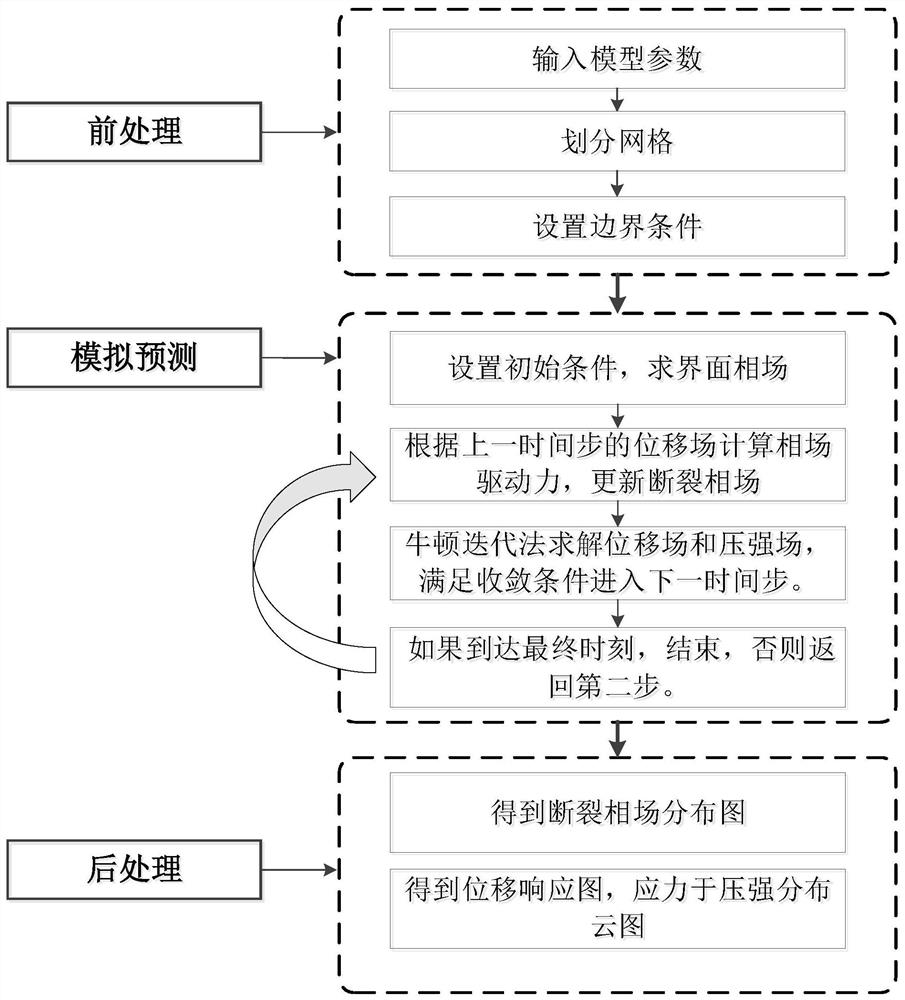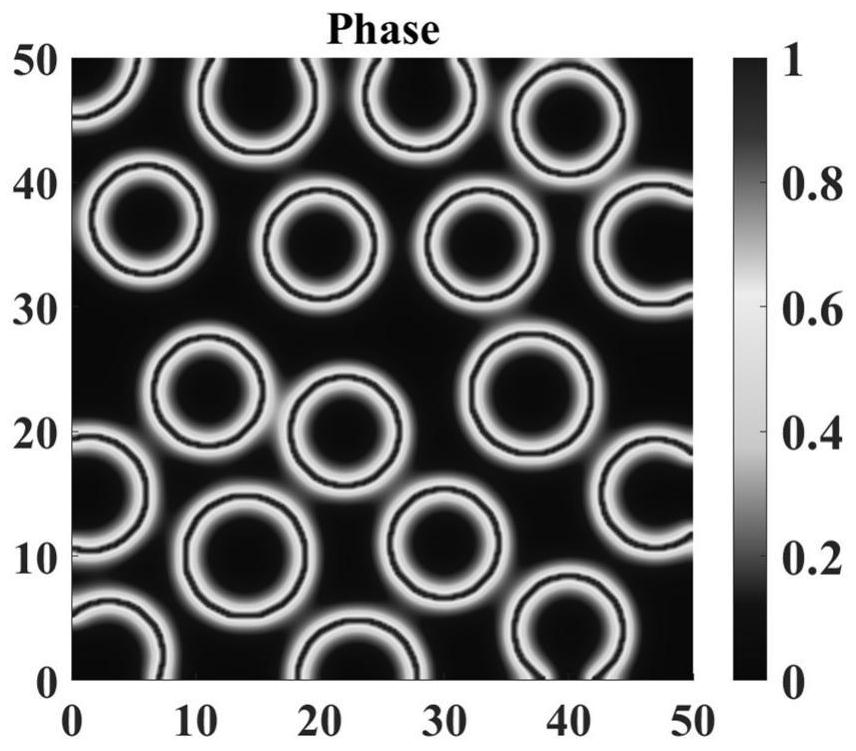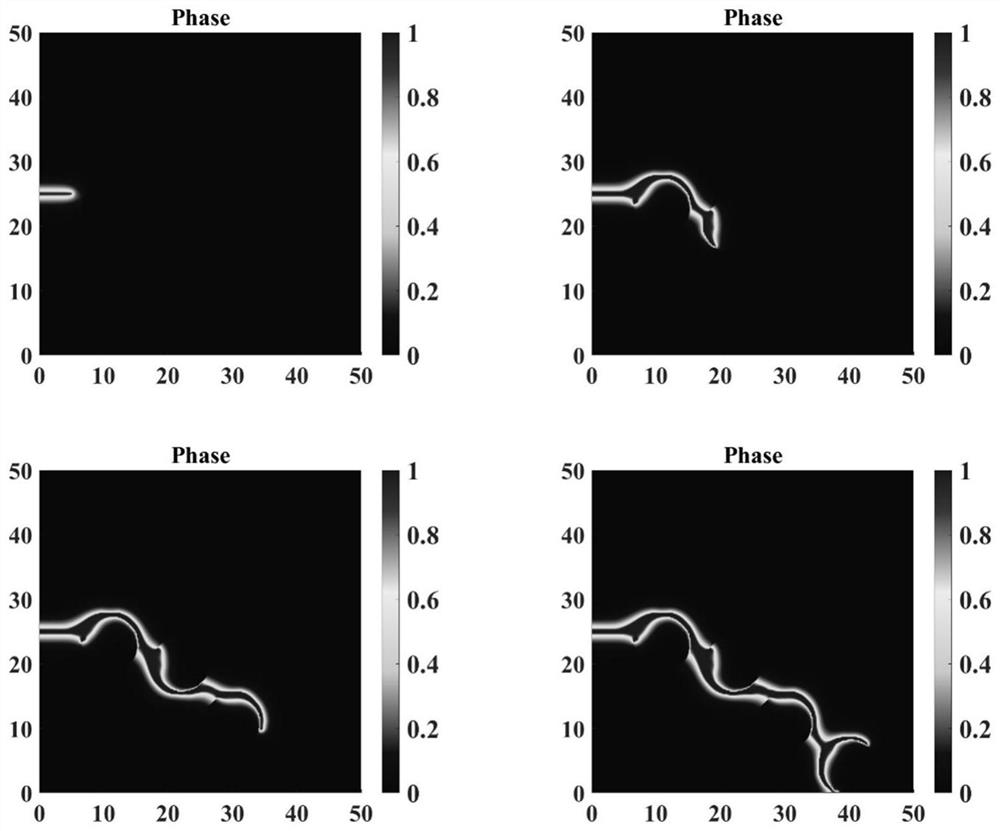Method for predicting interface failure and mesoscopic crack propagation of composite material under hydraulic osmotic load
A composite material and crack propagation technology, which is applied in the field of composite material interface failure and mesoscopic crack growth prediction under hydraulic penetration load, can solve the problems of grid dependence, insufficient calculation of crack bifurcation by element deletion method, and numerical instability.
- Summary
- Abstract
- Description
- Claims
- Application Information
AI Technical Summary
Problems solved by technology
Method used
Image
Examples
Embodiment Construction
[0031] Such as figure 1 , 2 The present embodiment shown relates to a method for simulating crack growth when a composite material is subjected to liquid pressure, comprising the following steps:
[0032] At the beginning of the simulation prediction process, the model is pre-processed. The pre-processing process includes determining the geometric parameters and mechanical performance parameters of the model, dividing the rectangular grid by software, and using the direct boundary approximation of the grid between the matrix and the reinforced material of the model. . The geometric parameters of the model include the overall length and height of the model, and the position and diameter of the fibers; the mechanical performance parameters include the elastic modulus of the matrix, Poisson's ratio, critical stress, Biot modulus, Biot coefficient, permeability coefficient, and reinforcement material. Elastic modulus, Poisson's ratio, critical stress, Biot modulus, Biot coeffici...
PUM
| Property | Measurement | Unit |
|---|---|---|
| elastic modulus | aaaaa | aaaaa |
| osmotic coefficient | aaaaa | aaaaa |
| elastic modulus | aaaaa | aaaaa |
Abstract
Description
Claims
Application Information
 Login to View More
Login to View More - R&D
- Intellectual Property
- Life Sciences
- Materials
- Tech Scout
- Unparalleled Data Quality
- Higher Quality Content
- 60% Fewer Hallucinations
Browse by: Latest US Patents, China's latest patents, Technical Efficacy Thesaurus, Application Domain, Technology Topic, Popular Technical Reports.
© 2025 PatSnap. All rights reserved.Legal|Privacy policy|Modern Slavery Act Transparency Statement|Sitemap|About US| Contact US: help@patsnap.com



